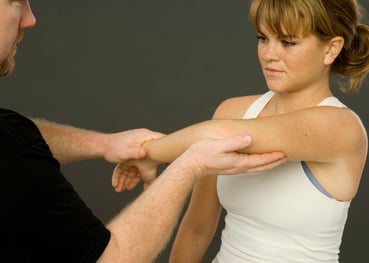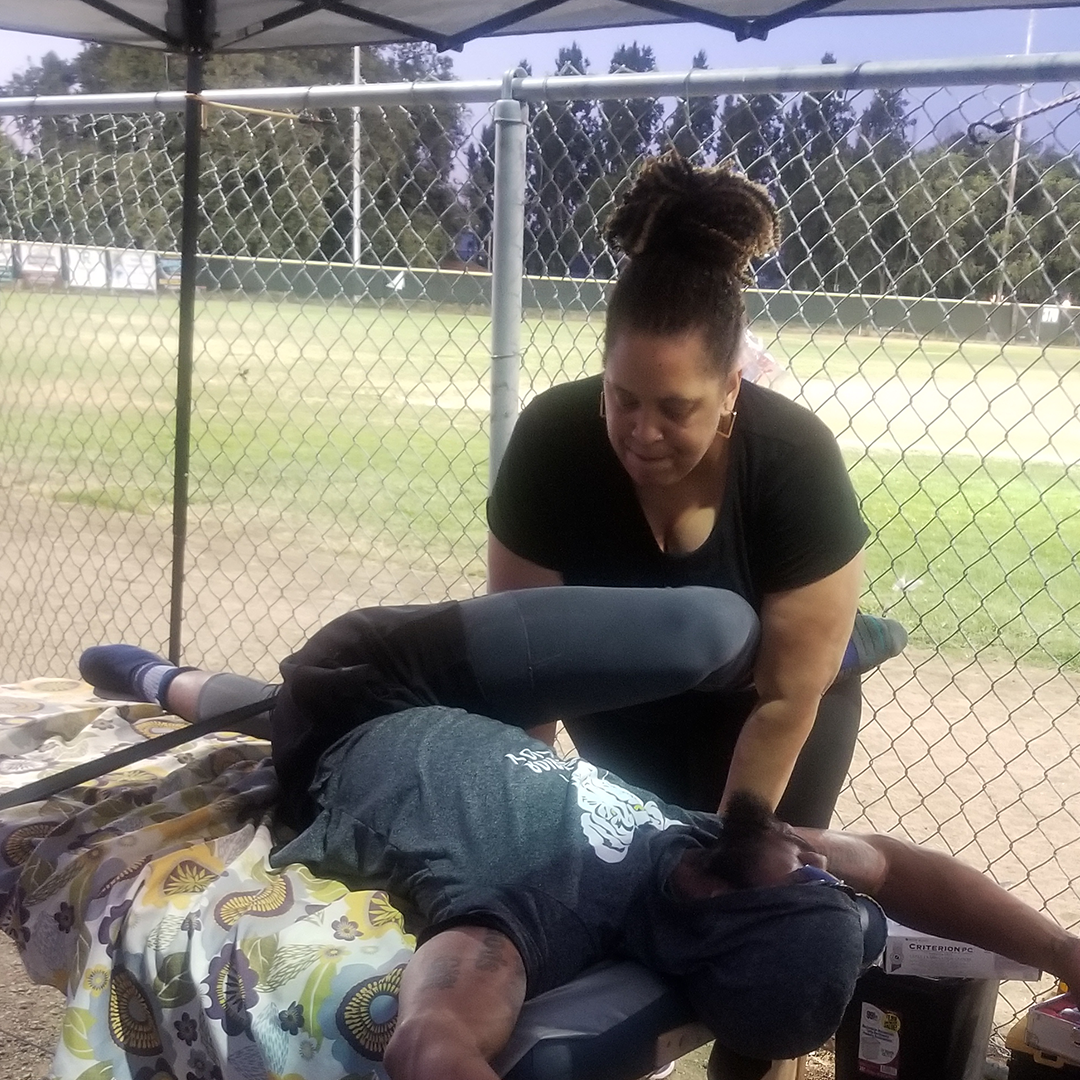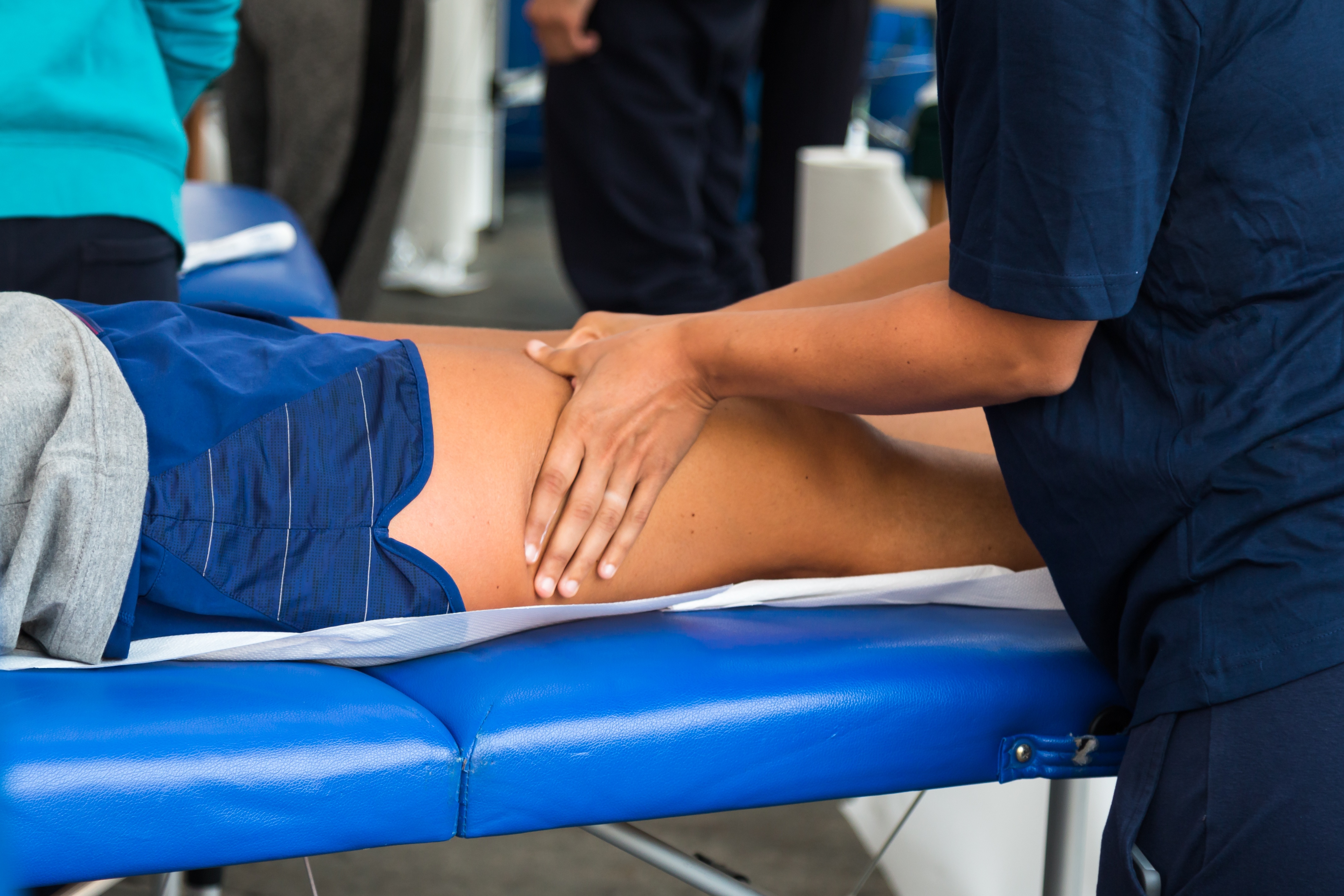Bringing Massage Therapy Into the Athletic Training Room
How soon until my player is back?... We have a big game this weekend and could really use our best player… This could really affect our season…
As an athletic trainer, you may have heard statements like these at one point or another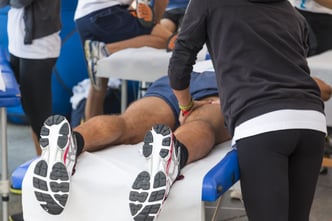 during your career. We all know that one of our most important roles is to return athletes to competition quickly and safely. One tool that can help accomplish this is to bring massage therapy into the athletic training room.
during your career. We all know that one of our most important roles is to return athletes to competition quickly and safely. One tool that can help accomplish this is to bring massage therapy into the athletic training room. The incorporation of massage therapists into the sports medicine team has evolved a great deal in my 23 years in the profession. The shift from being an outside referral to an integral component has occurred due to a variety of factors ranging from athlete demand to improvements in awareness of massage therapists skill sets.
The benefits of a skilled therapist are numerous and can dramatically improve your treatments and the performance of your athletes. You may have decided that this is a direction you want to move in but the more you think about it, the more questions you have like:
- How do I find the right therapist?
- What type of therapist is the best fit for us?
- How should I schedule them?
- How much should they be compensated?
This can be a big decision and these questions are not uncommon. With the information that follows, I hope to shed some light on them to make it easier to incorporate massage therapy.
Where to Start
Sports medicine departments are by nature- not designed to generate revenue- so there is a constant need to justify any added expense. This may be particularly tricky when it comes to bringing in something that is not well understood. I get it. I have seen it both as an athletic trainer and massage therapist. There can be a lot of variation in the educational backgrounds of massage therapists and entrusting them with high level athletes can be a bit unnerving. One of my early experiences in the NFL 20+ years ago happened not because of what massage skills I could bring, but because I “would not hurt” the players since I was also an athletic trainer. This is in vast contrast to my recent position with the Women’s Tennis Association where massage therapists are a vital and integral part of the sports medicine team, collaborating alongside physicians, physiotherapists, and athletic trainers to provide comprehensive care.
I can assure you that adding the right therapist to the team will pay immediate dividends and add a unique dimension to your training room that will produce results. In addition to the improvements in competition preparation, maintenance, and injury recovery, you can gain valuable treatment information from the therapist’s findings. Because the soft tissue needs of the athlete are being met, your treatments will become more effective, last longer, and you are able to focus your efforts on your areas of expertise allowing for a more comprehensive rehabilitation.
We know that an important component of a successful health care team is effective communication. Communication in the sports massage setting is quite different than in other medical settings. In the traditional medical model, the physician has the primary contact with the patient and then makes subsequent referrals to other health care staff. In the sports medicine model, the athlete’s point of contact maybe any one of the medical staff members from the physician down to the massage therapist and anyone in between. In this setting, the athlete will present to the practitioner with whom they have the best 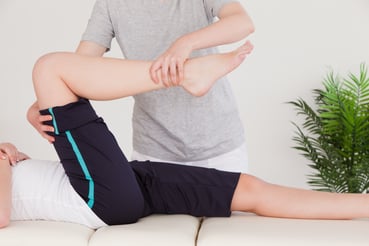 relationship with or are most accustomed to seeing. I can speak from experience that athletes will tell massage therapists things they don’t tell the other practitioners. Because of this, it is imperative that all members of the team understand their strengths and limitations and are educated about what the other team members can offer to get the best results for the athlete. There should be a collaboration to provide the best care for the athlete.
relationship with or are most accustomed to seeing. I can speak from experience that athletes will tell massage therapists things they don’t tell the other practitioners. Because of this, it is imperative that all members of the team understand their strengths and limitations and are educated about what the other team members can offer to get the best results for the athlete. There should be a collaboration to provide the best care for the athlete.
Who Do I Hire?
In order to find the right therapist, you have to begin with the right mindset with regards to massage therapy. You should approach it as utilizing a valuable tool and recognize that good massage therapists have a unique skill set that can make a positive impact on the team.
A very important part is finding someone whose skillet is a match for your needs. We know that sports is not a 9 to 5 job so the ability to be flexible and adapt to the schedule is important. A desire to want to work as part of a health care team and understanding that being part of a team means helping out with other duties and tasks is important for a good fit. The therapist should be eager to learn and demonstrate good critical thinking skills. In addition to their massage therapy education, additional training in things like, fascial therapy, trigger point work, flexibility techniques, and sports massage are beneficial.
Look for someone who is open to suggestions on additional skill sets that would be beneficial to your environment. Things like kinesiotaping, functional movement screen, and CPR can be useful. Offer to up skill them in things that would be a benefit to you such as assisting with heat emergencies. This will allow you to shape them into the type of therapist that will best meet your athletes.
Scheduling and Compensation
Once your find the right fit, which may take some time, you will need to consider how to best utilize them in your scheduling. Do you want to bring someone onto the staff full time? Do you only need someone at certain times of the year? Do you need someone for preseason and tournament time? Considerations such as these will help you determine the right fit for both you and the therapist. Regardless of what your scheduling needs are, you should still create time for communication. By taking the time to incorporate this, you can be as effective as possible in your treatments and take advantage of the therapist’s skill set.
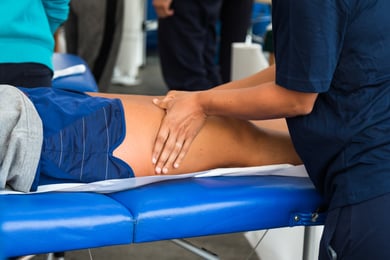 Some options for scheduling that I have found to be successful is to do it in blocks and schedule the athletes who need soft tissue work during that time. This allows you to control who is seen and the therapist can plan their time accordingly. This can be expanded to providing specific blocks of time for various teams. Another option is to schedule for the entire day with additional duties when they are not doing massage. While scheduling a therapist as an “on call” basis may seem easier, it will cause problems in the long run because you don’t attract the people who are there for the right reasons.
Some options for scheduling that I have found to be successful is to do it in blocks and schedule the athletes who need soft tissue work during that time. This allows you to control who is seen and the therapist can plan their time accordingly. This can be expanded to providing specific blocks of time for various teams. Another option is to schedule for the entire day with additional duties when they are not doing massage. While scheduling a therapist as an “on call” basis may seem easier, it will cause problems in the long run because you don’t attract the people who are there for the right reasons.
In combination with schedule, compensation plans are also a consideration. It is common to think that you should not have to pay a therapist because you are allowing them to work with high level athletes in a prestigious setting. While that sounds like a good idea, think of your own situation. Would you be willing to work for free just to say you treated athletes? It is my experience that creating a consistent and fair compensation system that recognizes and values the skillet brought to the team increases loyalty and commitment. You can choose an hourly rate, salary, or a base pay plus increases when doing massage. Regardless of the structure, the compensation needs to be appropriate for the therapist’s experience and education. Compensation does not have to be all monetary. Things like tickets, marketing exposure, and other opportunities add value and can help create a total package that is a benefit to both parties.
Finding the right therapist may be a lengthy process but the time investment on the front end will pay off multiple times over. Once the right fit is found, investing in the development of your staff will allow you to mold them to be as productive as possible and really create an amazing health care team.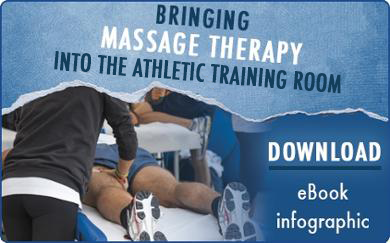




.webp)
